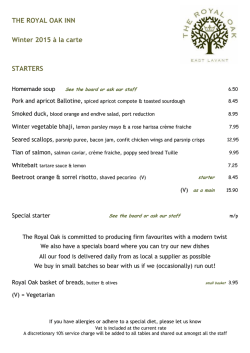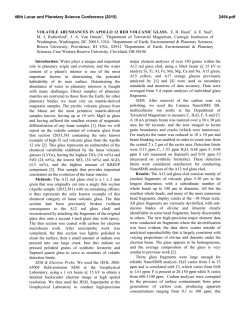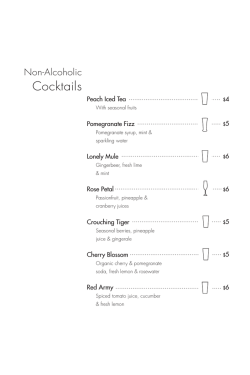
Welcome to Issue 37 of Glass News
Glass News Published by The Association for the History of Glass Ltd www.historyofglass.org.uk January 2015 Number 37 ISSN 1362-5195 Phelps, Andrew Meek, Martina Bertini and Ian Freestone for organising such a memorable event. It took place too late for an account to be prepared for this issue of Glass News, but a taste of it can be found in the Grant Report from Anastassios Antonaras. A future publication of the papers is planned by the organisers. The November AGM saw some changes to the Board of Management. We thank Justine Bayley who stands down as President; she was elected in 2011 and has steered the Association through a varied programme of events and publications; she remains on the Board. We welcome Colin Brain as the new President, a long-standing member of the Board who has helped organise events such as Interpreting Finds from Glasshouse Excavations in 2009, and The Evidence for British Crystal Glass in 2013 (with his wife Sue), and is a frequent contributor to Glass News. We say farewell to David Martlew who has stood down after 15 years, and thank him for his dedicated contribution, which included the organisation of Glass in Science and Medicine in 2011. We welcome three new members to the Board: Simon Cottle, Chloe Duckworth and Daniela Rosenow. Frontispiece: A large English case bottle perforated by a gunshot, excavated in Buenos Aires (scale in cm). © Patricia Frazzi. See Daniel Schavelzon’s grant report on pg 12 for details of further glass finds from the city. Welcome to Glass News 37! This issue is packed with a wide-ranging assortment of glass history, including reports on projects assisted by AHG grants on ancient Egyptian glass working, Roman glass from Aquileia in Italy, early Christian glass gems from Greece, luxury 17th-century glass from Portugal, and 17th- and 18thcentury Spanish and English glass excavated in Buenos Aires. There are details of a variety of exhibitions and meetings planned for 2015 and new books. This includes a joint AHG study day on Glass for Eating, Drinking and Making Merry in June (see page 2). Our recent meeting Things that Travelled held with the Early Glass Network in London was a great success and well-attended, including participants that travelled from the Mediterranean, northern Europe, the USA, Japan and Australia. Many thanks to Daniela Rosenow, Matt Glass News 37 January 2015 We are delighted that Glass of the Roman World, will shortly be published; see page 14 for details. Do not miss Oxbow Books’ pre-publication offer, valid until July. AHG members/subscribers are also offered a generous discount on Dominic Ingemark’s book Glass, Alcohol and Power in Roman Iron Age Scotland (see page 14). The editors would like to thank this issue’s contributors for their material; please keep it coming for future issues! We would welcome long or short pieces about your glass research and discoveries, meeting or exhibition reviews, information about glass-related events or books, and your queries. See the back page for contact details. Subscriptions for 2015-2016 are due in April, and a form is enclosed to send with your payment to John Clark. FACEBOOK PAGE The AHG is on Facebook! To keep up-to-date on news and current research on the history of glass visit: facebook.com/TheAssociationForTheHistoryOfGlass Click ‘Like’ and please share. 1 These results lead to the intriguing conclusion that luxury glass was not only imported from Venice, but some local elaboration of Venetian and façon de Venise patterns and techniques also took place, in order to satisfy the specific tastes and needs of local customers. Where this production occurred is a question without an answer yet, but we are confident of the results of our investigation. It is evident that – also for modern periods – archaeological data can supply valid information, integrating what we know from documents and museum collections. References Belo, F, 1993 Rellaçaõ da vida e morte da serva de deos a veneravel madre Elenna Da Crus, por Sóror Maria do Céu, Lisbon: Filomena Belo and Quimera Editores Evangelisti, S, 2007 Nuns. A history of Convent Life 1450 – 1700, New York and Oxford: Oxford University Press Ferreira, M A, 2004 Espólio vítreo proveniente da estação arqueológica do Mosteiro de Sta. Clara-a-Velha de Coimbra: resultados preliminares, Revista Portuguesa de Arqueologia 7.2, 541–83 Ferreira, M and Medici, T, 2010 Mould-blown decorative patterns on medieval and post-medieval glass beakers found in Portugal (14th-18th century), in C Fontaine (ed.), D'Ennion au Val Saint-Lambert. Le verre soufflé-moulé. Actes des 23e Rencontres de l'Association française pour l'Archéologie du Verre, Brussels: Institut royal du Patrimoine artistique, 401–409 Medici, T, Lopes, F M, Lima, A M, Larsson, M A and Pires de Matos, A, 2009 Glass bottles and jugs from the Monastery of Sta. Clara-a-Velha, Coimbra, Portugal, in Annales du XVII Congrés de l´Association Internationale pour l’Histoire du Verre (Antwerp 2006), Antwerp: Association Internationale pour l’Histoire du Verre, 391–400 Lima, A, Medici, T, Pires de Matos, A and Verità, M, 2012 Chemical analysis of 17th century millefiori glasses excavated in the Monastery of Sta. Clara-aVelha, Portugal: comparison with Venetian and façonde-Venise production, Journal of Archaeological Science 39(5), 1238–48 Large Assemblage of Seventeenth- and Eighteenth-Century British and Spanish Glass from Buenos Aires, Argentina Daniel Schavelzon University of Buenos Aires, Centre for Urban Archaeology [email protected] Two archaeological excavations made in Buenos Aires, Argentina, between 2007 and 2013, have made it possible for the first time to recover significant groups of European glass fragments (English, Spanish, Dutch and Italian) dating to the seventeenth and early eighteenth centuries. The two groups of glass objects were found at two archaeological excavations corresponding to two separate dwellings located just over a hundred feet apart within the same block, at 375 Bolivar Street and 460 Venezuela Street under the direction of the author and Flavia Zorzi, in an area in the centre of the city where excavations have been going on for over twenty years, and where only isolated fragments of glass from those dates had been recorded. Buenos Aires in the seventeenth and eighteenth centuries was a small town founded by Spanish settlers in 1580, and as such its material culture was scarce and modest, a situation which only changed when it became the seat of a Vice-Royalty in 1776. Until then, Buenos Aires held an isolated and marginal position in the international trade map. This explains why only isolated fragments and a few bottles have previously been found from the two first Glass News 37 January 2015 Figures 1–2: Fine wine glasses, 17th century, probably English. © Patricia Frazzi centuries of Buenos Aires’ history. Records from that period hardly mention glass objects or, if they do, the references do not allow them to be identified accurately. Glass was a very valuable material in the early days of the town, signalling the social prestige and economic power of its owner, and it is a rare find today. 12 The town, as part of a Spanish colony in America, was under a system of monopoly of trade in the hands of the Spanish government. But this did not stop smugglers, who account for the appearance in early houses in Buenos Aires of objects manufactured in different countries of the Mediterranean and elsewhere in Europe. Figure 4: Bulbous Spanish glass vessel. © Patricia Frazzi Figure 3: A Buenos Aires lady. European glass was a symbol of wealth, and to contrast the national flag was painted on the bookmark and the fan. Portrait by Fernando García del Molino, c. 1850 or before (Museo Fernández Blanco, Buenos Aires). The growth of the town into a city in the 1770s is explained by its new status as seat of the Vice-Royalty of the Rio de la Plata as well as by the relaxation of the trade prohibitions, by the growth of a slave market in which slaves were smuggled into Buenos Aires and then sold to Potosí (in present-day Bolivia) and all over South America, and by the wealth generated from the illegal export of silver mined in Potosí. This new wealth caused a change in the daily life of the town, heightened by its new status as seat of the Vice-Royalty, with its attending court and authorities. The assemblage is made up of a group of large case bottles (see Frontispiece) – mostly dark green although others range from turquoise to clear blue – together with decanters, medicine vials, wine glasses (Figs 1–2), tumblers with ground romantic motifs, flasks and complex Spanish blown glass bottles (Figs 4–5), made of thin and transparent glass, which served a decorative rather than a functional purpose. The restoration of these two groups of glass vessels, under the direction of Patricia Frazzi, has posed a challenge in Latin America as there have not been enough finds to create a body of experts in glass restoration. At present work is also being carried out on several pieces found in previous excavations, but which, because of the lack of comparable material, could not at the time be ascribed to either a period or a place of origin. Glass News 37 January 2015 The glass vessels, at present undergoing restoration and studies with the generous support of a grant from the Association for the History of Glass, have allowed specialists to understand previous finds of whole or fragmentary bottles and to gather information for a future publication of all the discovered glass objects. Thus, Argentina has a collection of glass from the first two centuries of the colony, the second such collection in Latin America, after Mexico. Figure 5: Large bulbous decanter from Spain during the restoration process. © Patricia Frazzi 13
© Copyright 2025



